A clean roof is vital for your home’s longevity and looks. But how often should you clean your roof? It depends on the material, environment and moss or algae growth. Regular roof cleaning service is not only for a clean roof but to prevent costly repairs like roof leaks or damage to roofing materials. This guide will explain why regular cleaning and inspection is important, what happens if you neglect your roof and how to keep it in top shape.
Factors That Affect Roof Cleaning Frequency
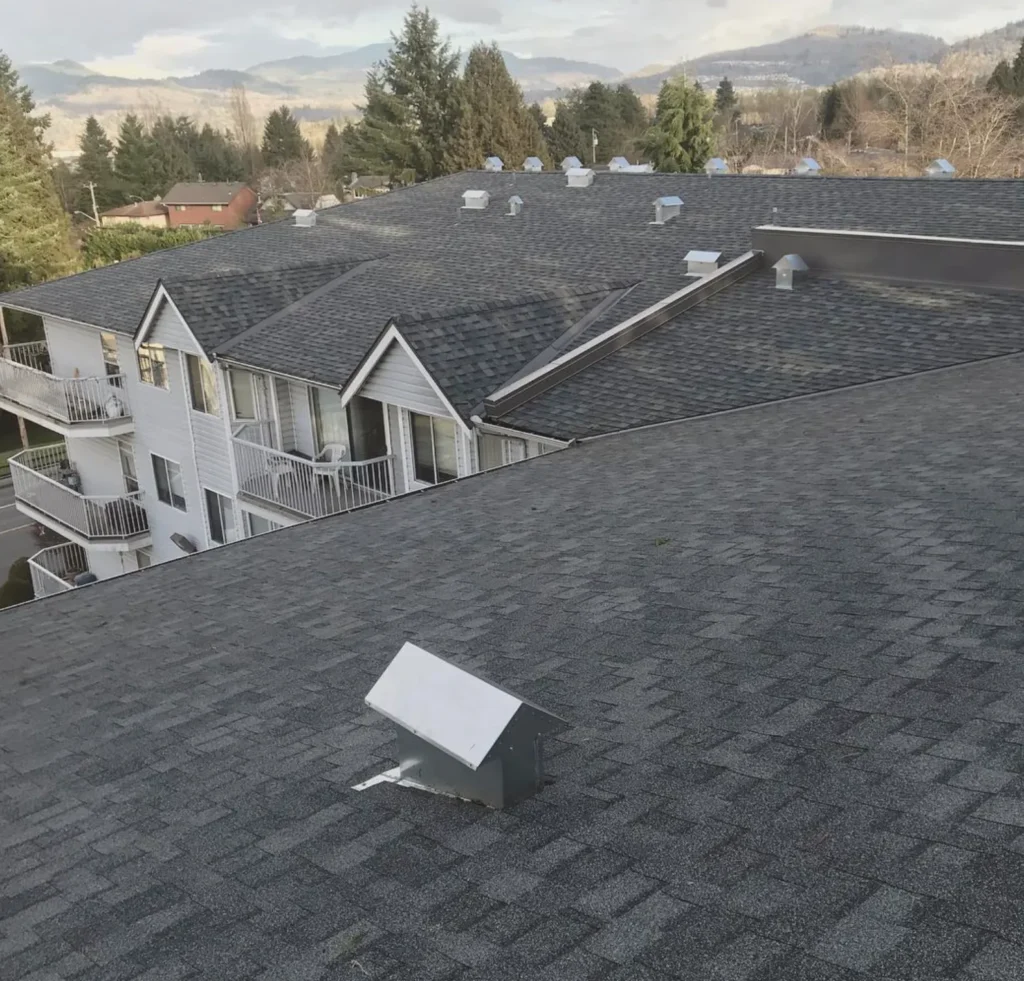
- Roofing Material
Roof cleaning frequency depends on the type of roofing material used. For example, asphalt shingles which is common in residential homes may need more frequent cleaning than metal roofs or concrete tile roofs. Asphalt shingle roofs are more prone to moss and algae growth, tile roofs are more resistant to such problems. Flat roofs and composition roofs may have different cleaning requirements. Always check the manufacturer’s guidelines or consult roofing experts to know the best schedule for your roof material. - Environment
Homes located in areas with heavy rainfall or surrounded by mature trees are more prone to moss and algae growth, hence more frequent cleaning is needed. Accumulation of organic debris like tree branches and leaves can also cause problems if left unaddressed. In damp climates or areas with dense tree canopies, roofs may need to be cleaned more often due to the perfect environment for moss growth and lichen growth. - Weather
Local climate and seasonal weather conditions like rainy seasons and stormy seasons can also affect how often you should clean your roof. Stormy season brings in debris that can clog gutters, causing water to pool on the roof, potentially leading to roof leaks. Areas with frequent sunny weather may not have as much debris buildup but the harsh sunlight can damage roofing materials over time. Conducting a regular roof inspection after each season can help prevent issues. - Age of Roof
Older roofs need more frequent inspection and cleaning to catch signs of wear and tear like leaky roofs, roof surface deterioration or missing shingles. If your roof is more than 10 years old, annual roof cleaning is a must to extend its lifespan. Brand new roofs may not need as much attention but regular maintenance is key to long term durability.
Benefits of Regular Roof Cleaning
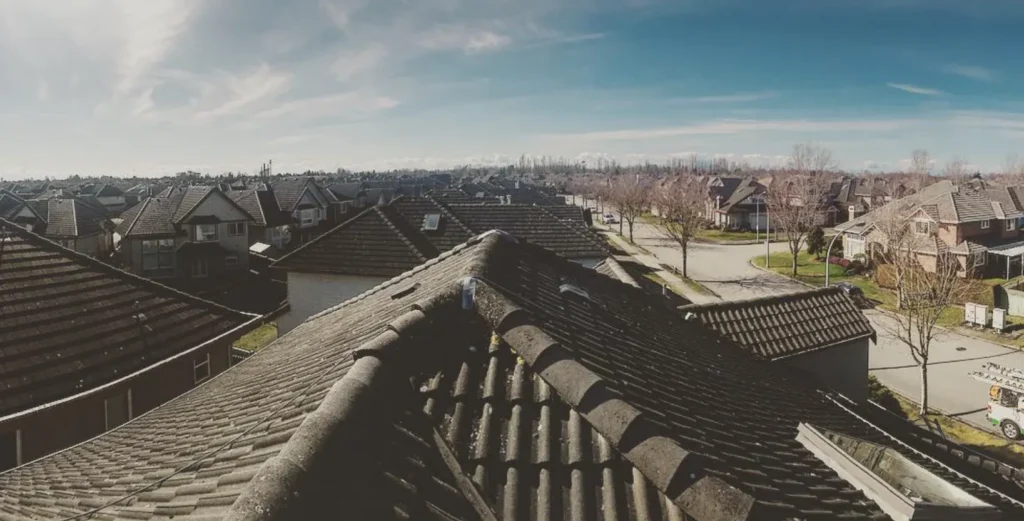
- No Roof Leaks
A clean roof is less likely to develop leaks which can cause water damage inside your home. By removing debris and keeping water flowing off your roof you reduce the risk of water pooling which can seep into the structure and cause damage. - Longer Roof Life
Keeping your roof clean of debris, moss and algae growth will protect the underlying roofing materials from deterioration. Moss and algae can trap moisture against the roof causing rot and decay. Regular cleaning is a preventative measure to keep your roof in top condition and avoid costly repairs down the line. - Better Curb Appeal
A dirty roof can detract from your home’s appearance. By keeping your roof clean through regular cleaning you’ll preserve your property’s value and looks, especially if you plan to sell your home in the future. Potential buyers will be impressed with a well maintained roof and less likely to negotiate on price due to the roof. - No Safety Risks
Neglecting your roof can be a safety risk. Moss growth and debris can create slippery surfaces especially during the wet season, increase the chances of accidents. When doing roof maintenance make sure you’re wearing sturdy non-slip shoes and appropriate safety gear like rubber safety gloves. - No Damage to Roofing Materials
Organic growth like algae growth can cause severe damage to the roof’s protective layers. Protective granules in asphalt shingles are vulnerable to algae and when damaged can cause deterioration. Moss growth can lift and crack shingles making your roof more prone to wind damage and leaks.
How to Clean Your Roof
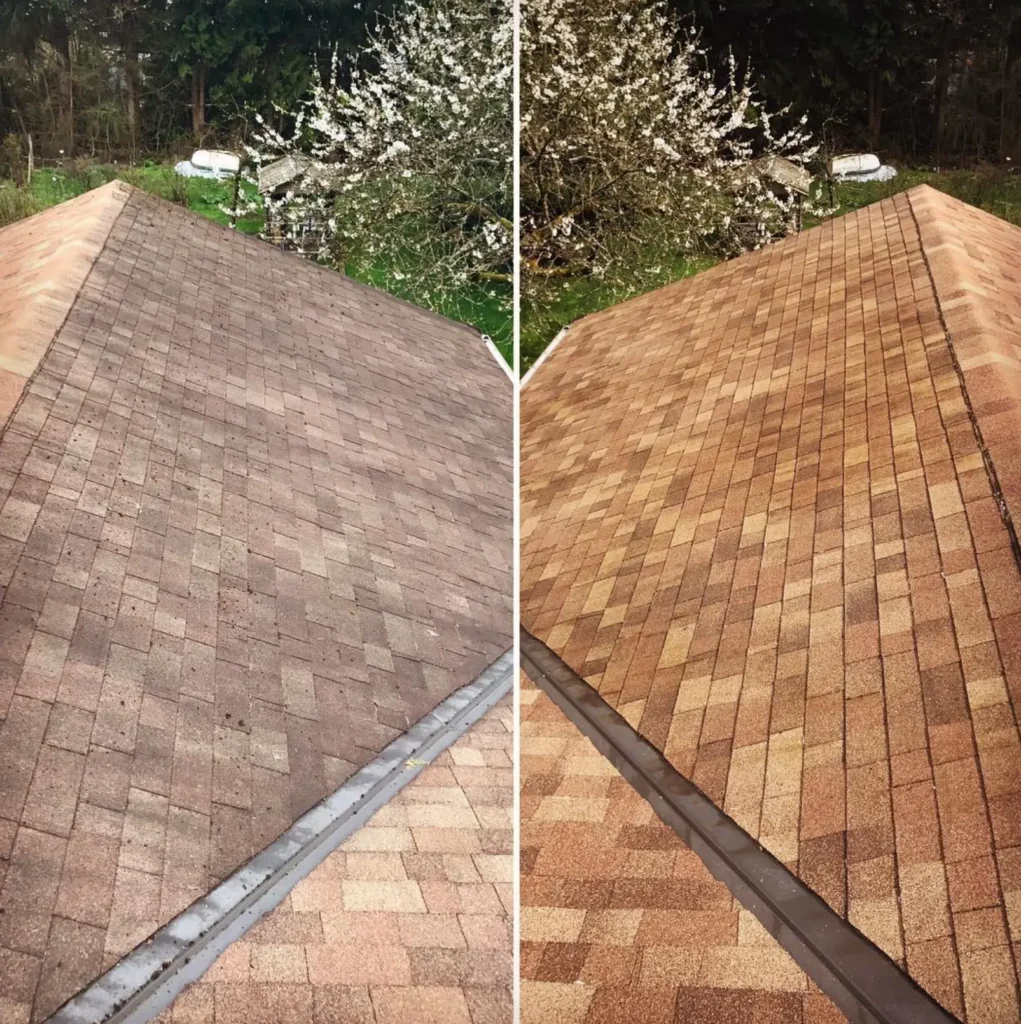
- Safety First
Roof cleaning can be dangerous so safety first. Always wear rubber safety gloves, sturdy shoes and make sure the weather is good for working on the roof. Don’t clean in bad weather like heavy rain or wind. - Choose the Right Method
Different types of roofs need different methods. For asphalt shingles a low pressure washer is recommended to avoid damaging the shingles. Don’t use abrasive products or scrub too hard which can strip away the paint or granules from your roofing material. - Use the Right Cleaning Solution
- To remove algae, moss or lichen growth use a mild bleach solution (a cup of bleach mixed with water) or a specialized cleaning solution for roofing materials. This will kill the growth without damaging the roof. Don’t use harsh chemicals which can damage over time and affect the condition of the roof. For organic growth like moss and algae chemical solutions are usually effective but make sure they are suitable for the type of roof material you have.
- Cleaning Tools
Depending on the type of roof you’ll need different cleaning tools. For metal or tile roofs a plastic scoop or soft brush can remove large debris. An air blower can be useful for blowing leaves and loose debris without damaging the roof surface. For cleaning stubborn stains or dirt accumulation in the crevices of roofing tiles a high pressure water blaster can be effective. But be careful not to damage the roofing materials with too much pressure. - Rinse with Clean Water
After applying the cleaning solution and removing debris it’s important to rinse the roof with clean water to wash away any remaining dirt or chemicals. A gallon of water poured evenly over the roof will do for smaller areas or you can use a low pressure washer for larger roofs. Don’t use too much water pressure which can harm roof sheets or cause leaks by displacing shingles or tiles.
Why Hire a Professional Roof Cleaning Service?
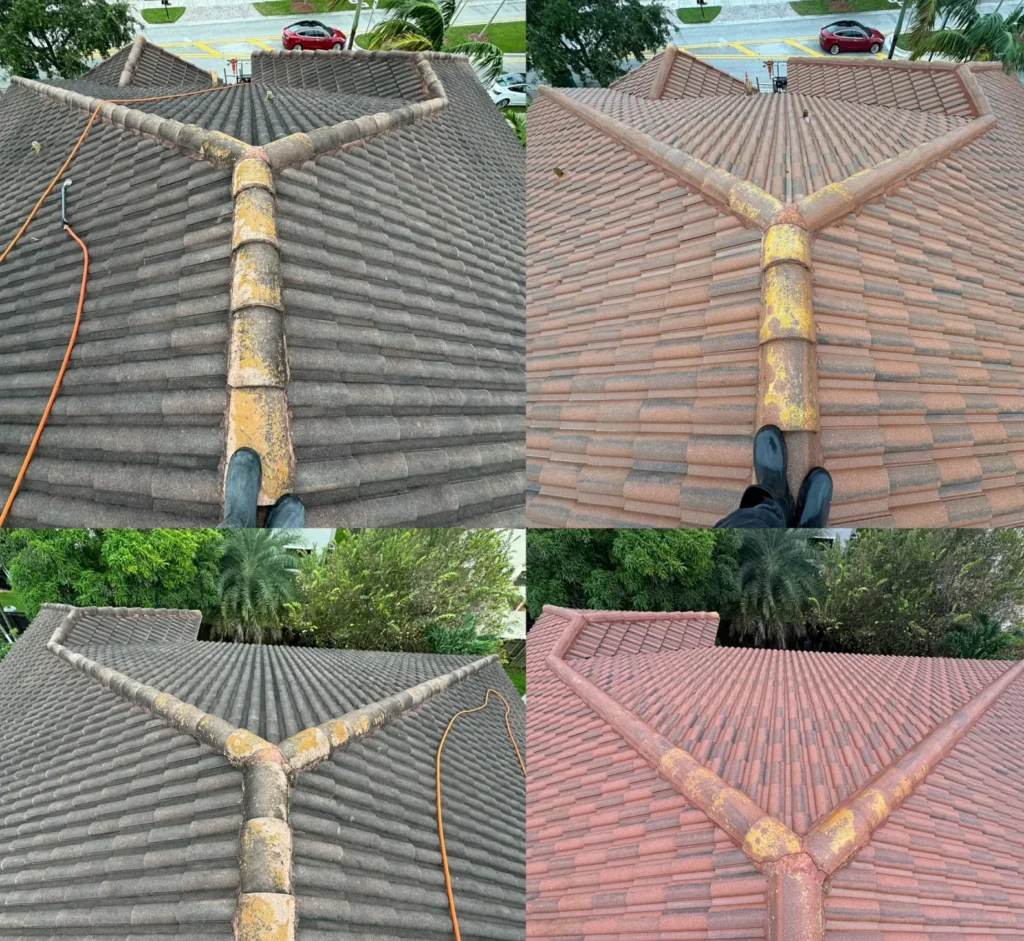
Hiring a professional roofing company for your roof cleaning job ensures it’s done safely and properly. Professional roof cleaners have the experience and equipment to handle different types of roofing materials and conditions. They also know the roofing industry standards so they can identify potential problems early such as roof leaks, signs of damage or wear and tear on your roof’s protective layers.
Professional services offer annual roof inspections and maintenance schedules so it’s easier to keep your roof in top condition. They can also handle complex jobs such as cleaning around complicated structures or areas with dense tree coverage so your roof remains debris and organic free.
Roof Cleaning Signs
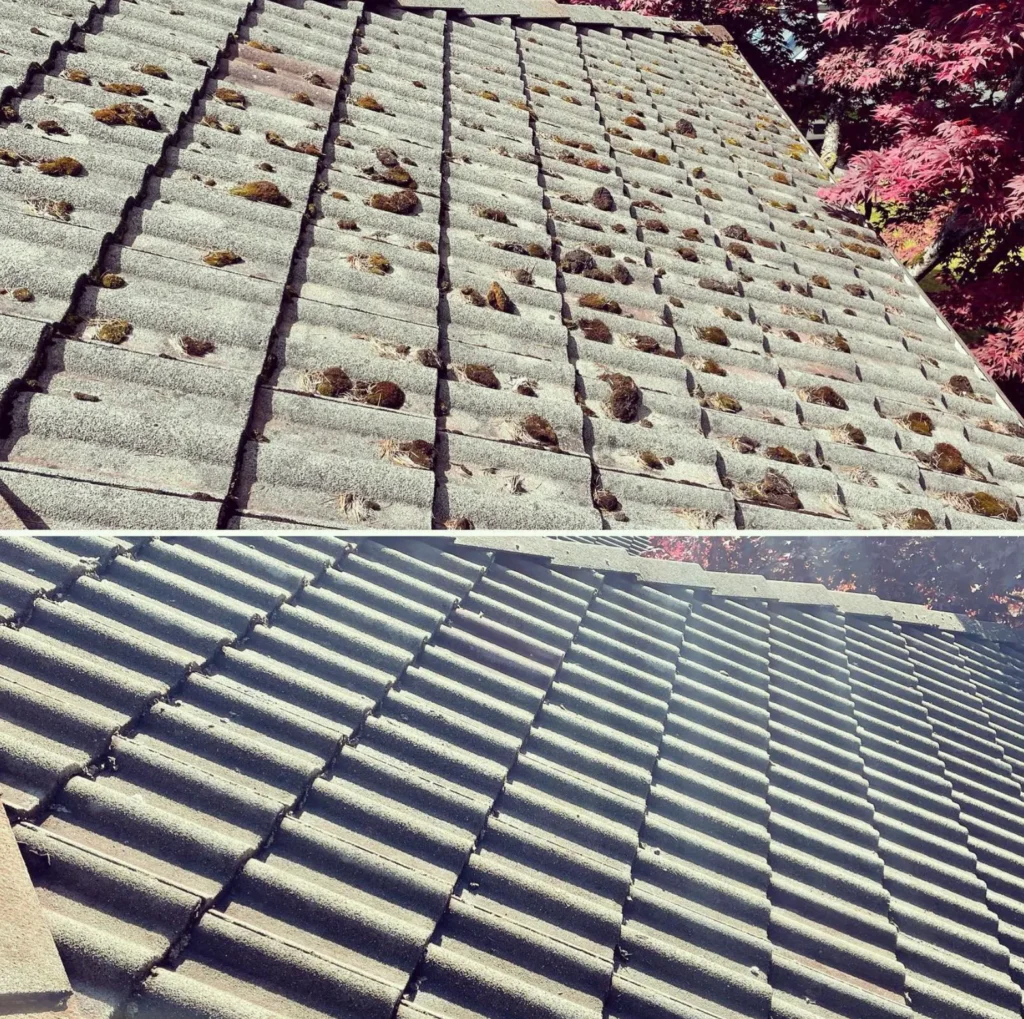
- Moss, Algae or Lichen Growth
One of the most obvious signs is green or black streaks. Algae growth or moss growth. These organic growths love damp conditions and if left untreated can cause major damage over time. Algae can eat away at the asphalt shingles and moss can trap moisture against the roof surface causing leaks. - Dirt Buildup
Over time dirt can build up on your roof especially after a stormy season. Dirt buildup is a perfect environment for moss and algae to grow and it can hide early signs of damage. Cleaning the built up dirt will prevent further issues. - Debris Loads
Tree branches, leaves and other debris can block gutters and downspouts causing water to pool on the roof. That standing water can cause major water damage if not addressed quickly. Cleaning the debris will ensure the water flow is not blocked and prevent extensive water damage to your roof and home. - Damaged Shingles or Tiles
If you see signs of damage like cracked or missing shingles or loss of the protective granules on your asphalt shingles it’s time to schedule a roof cleaning and inspection. Damaged shingles can lead to leaky roofs and other structural issues that may require costly repairs. - Aesthetic Issues
Besides protecting your home a clean roof looks good. A dirty roof with black stains or streaks not only looks ugly but can also decrease your property value. If you’re selling your home keeping your roof clean is important to make a good impression on potential buyers.
Summary

Cleaning your roof regularly is important to extend its life and prevent costly repairs. The frequency of cleaning depends on the type of roofing material, environmental conditions and the age of the roof. Whether you clean the roof yourself with proper safety measures or hire a roof cleaning service, a clean roof will protect your home from leaks, moss growth and other problems.
A clean roof adds to your home’s curb appeal, safety and keeps the roofing materials in good condition for years to come. Regular inspections and timely cleaning will prevent damage, reduce repair costs and keep your roof performing at its best.
FAQ
How often should I clean my roof?
Roof cleaning frequency depends on the type of roof, climate and surrounding environment (trees). Most homeowners should clean their roofs at least once a year but homes in damp climates or with heavy tree coverage may need more frequent cleaning.
Can moss or algae hurt my roof?
Yes, moss and algae can cause damage over time. Moss traps moisture against the roof material and causes rot and decay, algae eats away at the granules of asphalt shingles.
Should I hire a professional for roof cleaning?
Hiring a professional roofing company is recommended for roof cleaning especially for homes with steep or hard to access roofs. Professionals have the experience, equipment and safety protocols to do the job safely and efficiently.
What tools do I need to clean my roof?
Roof cleaning requires basic tools like an air blower or soft brush to remove debris, a plastic scoop for heavy buildup and a low pressure washer to rinse. For stubborn moss or algae growth, a cleaning solution like diluted bleach can be used.
Can I clean my roof anytime?
No, avoid cleaning your roof during bad weather like heavy rain, wind or icy temperature. Clean on a dry and clear day.
